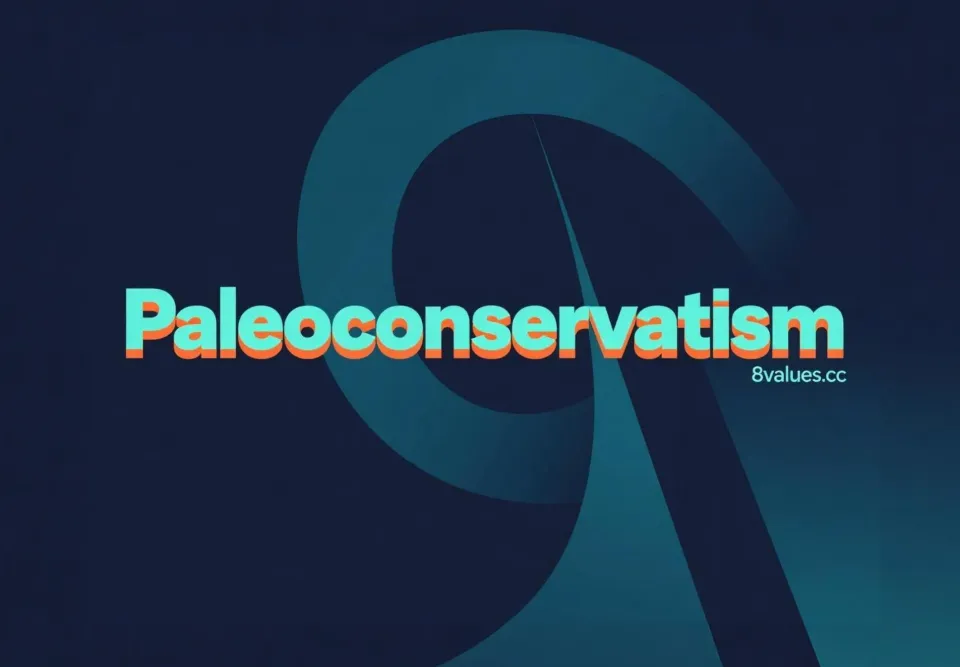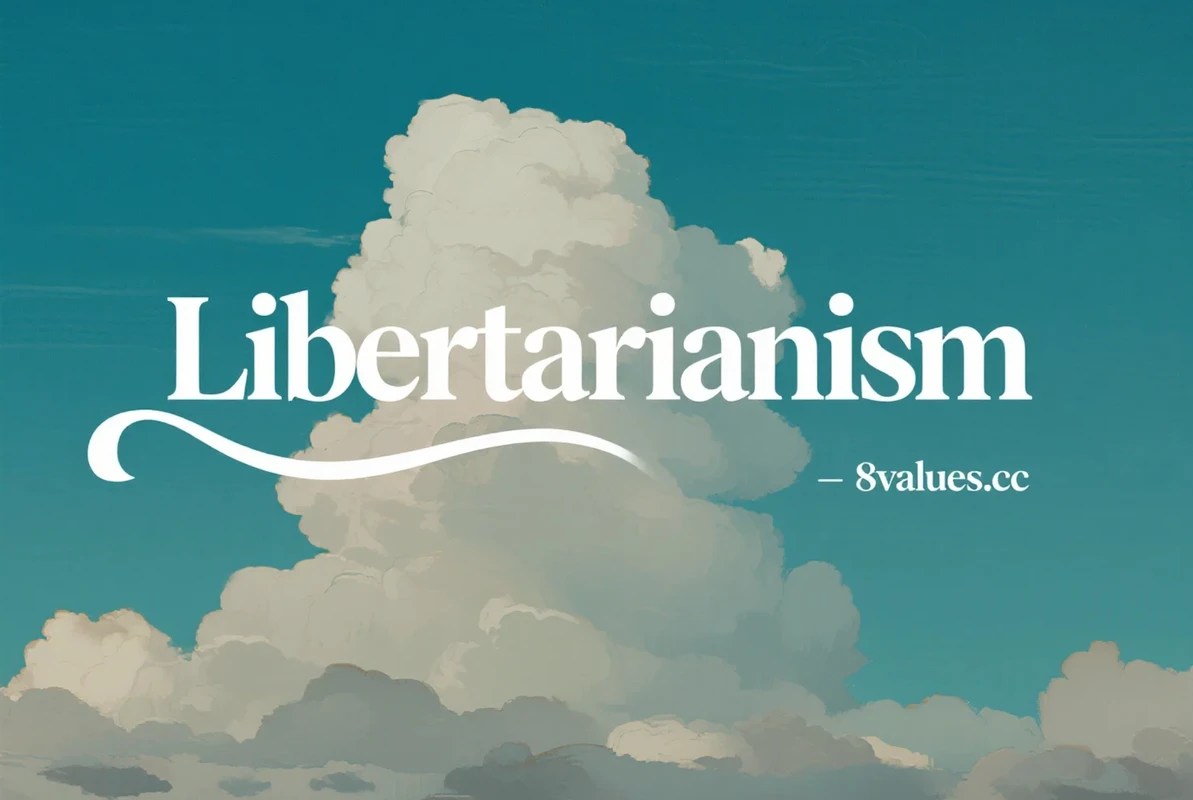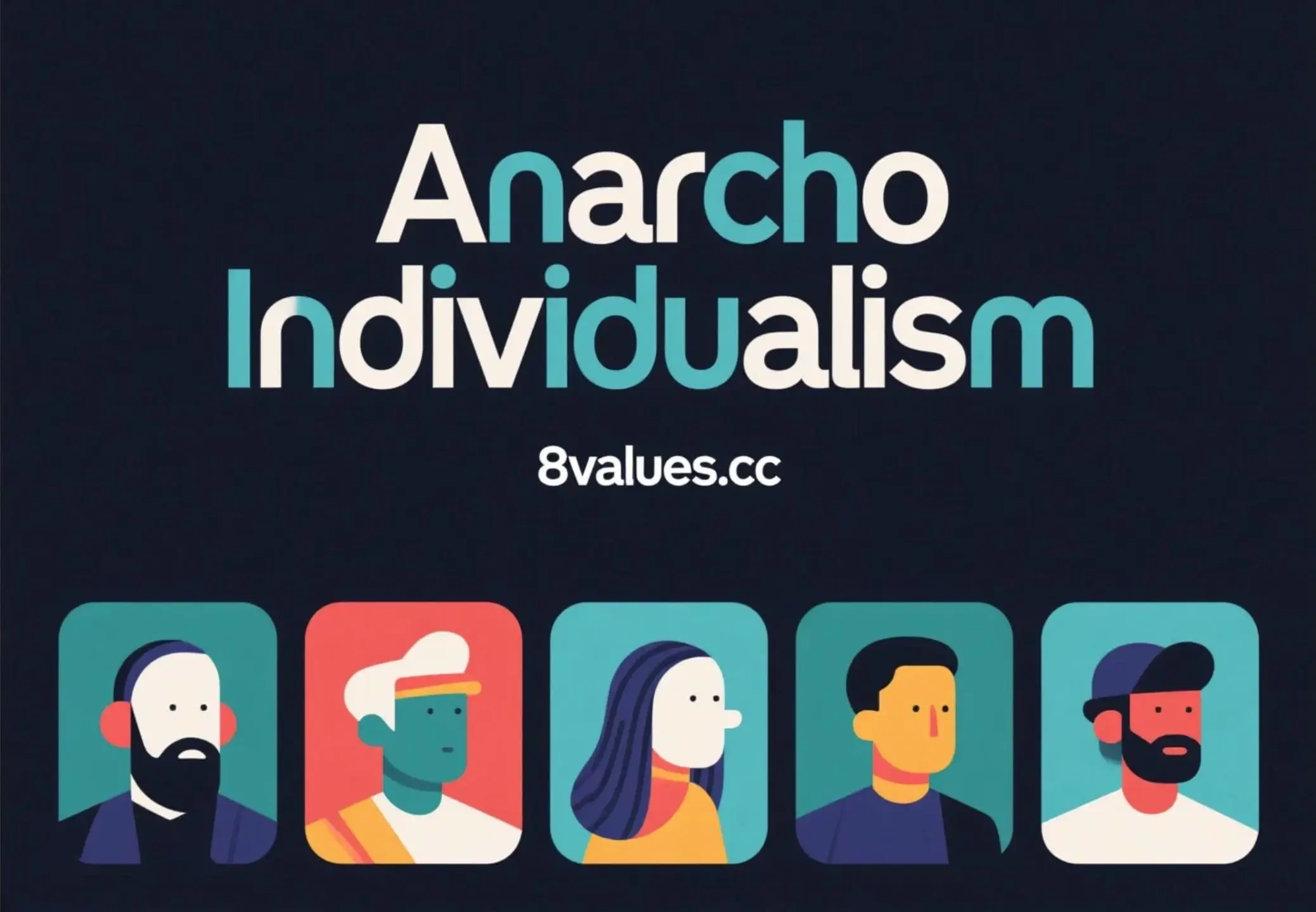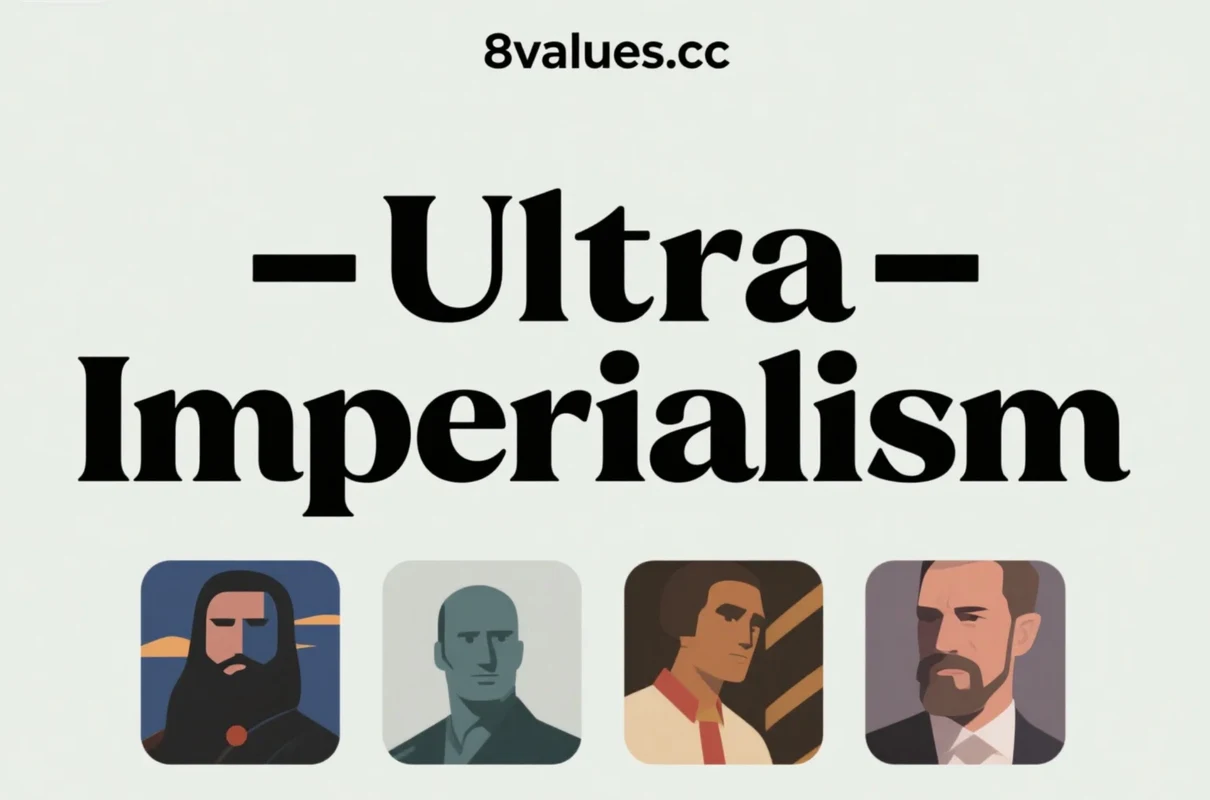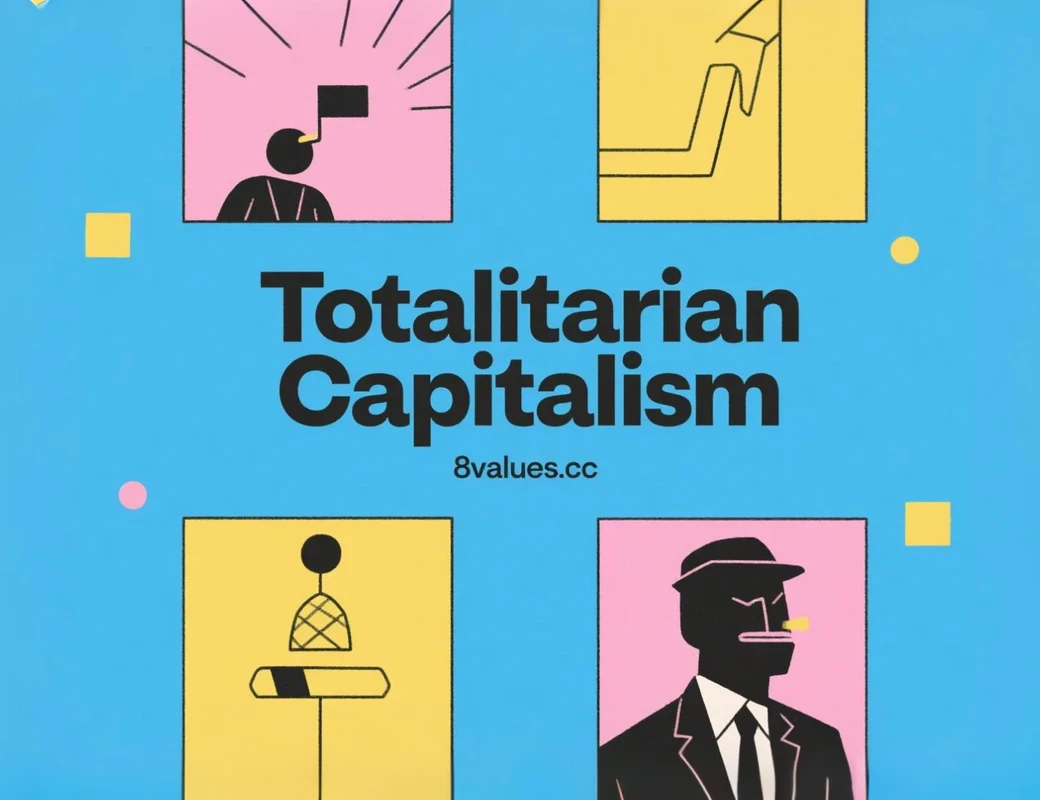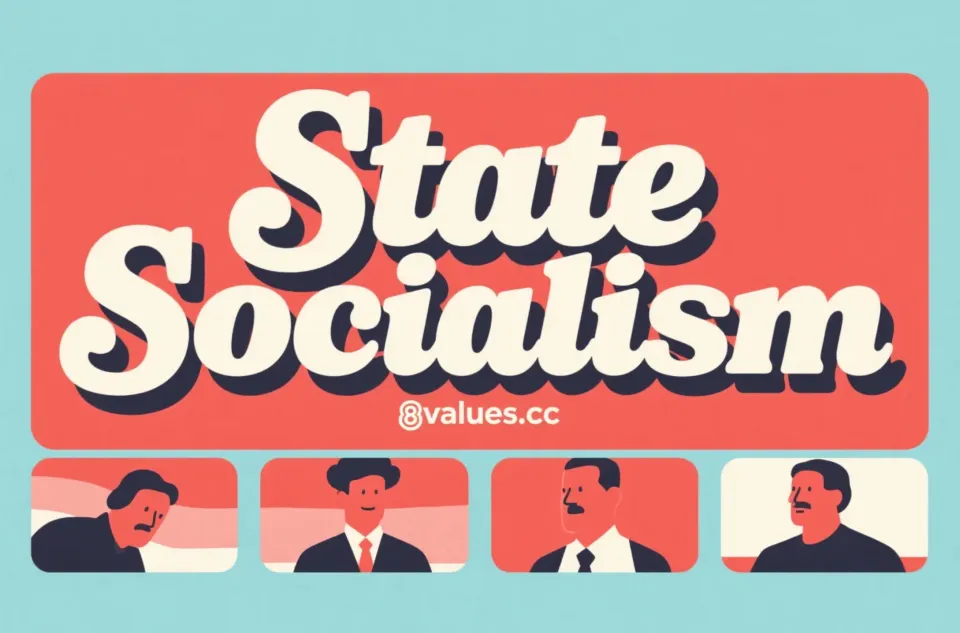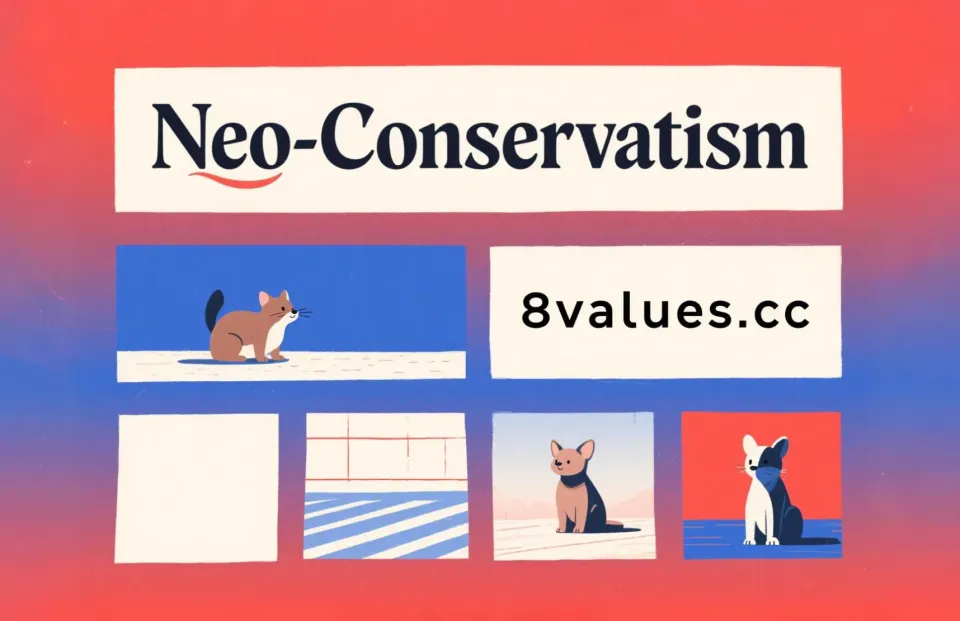A comprehensive interpretation of Paleoconservatism: nationalism and anti-globalization trends
Paleoconservatism is a political ideology that emphasizes tradition, limited government, and isolationism. This article will analyze in detail its core propositions, historical origins, and differences with neoconservatism to help readers understand this conservative political thought rooted in nativism.
Political ideology is complex and encompasses a range of views on society, the economy, government, and international affairs. Within the conservative camp, there are profound differences between different schools. Among them, "Paleoconservatism" is a highly identifiable and controversial branch. The name itself hints at its core claim: "Paleo-" is derived from the Greek root _palaiós_, meaning "ancient" or "primitive," indicating that the school of thought aims to represent a more historic and authentic conservative tradition than the emerging neoconservatism. If you are curious about your political values, you can visit the 8Values Quiz political ideology test official website (https://8values.cc/) to gain a deeper understanding of your position in the broader political spectrum through tools such as the 8 Values political orientation test .
The Definition and Origin of Paleoconservatism
Paleoconservatism is a political philosophy that emphasizes nationalism , Christian ethics , regionalism and traditional conservatism . It strives to preserve tradition, limited government, and civil society. On the political spectrum, old conservatism is considered to be further to the right than mainstream conservatism.
Historical background and terminology
The theoretical construction and development of Paleoconservatism was largely intended to refute and revise the position of neoconservatism . It originated in the 1970s and 1980s as a response to the rise of neoconservatism within the conservative movement at that time.
- Naming and opposition : The terms "Neoconservatism" and "Paleoconservatism" were coined after American conservatism was divided by the outbreak of the Vietnam War. Interventionists who supported the war were called neoconservatives, while traditional conservatives who adhered to nationalist isolationism were labeled "old conservatism," marking a decisive split between the two.
- Founder : This term was coined by philosophers and historians Paul Gottfried and Thomas Fleming in the mid-1980s in an effort to revive the "Old Right" tradition within the Republican establishment.
- Ideological inheritance : Old conservatism inherited the ideas of the "old right" that opposed Roosevelt's New Deal in the 1930s and 1940s. They draw insights from theological, literary, and historical studies. This trend also overlaps ideologically with Paleolibertarianism and Right-wing populism .
The core ideas and traditional values of Paleoconservatism
The core of old conservatism lies in its resolute defense of traditional social structures and its opposition to secularization and radical changes in modern society.
Traditionalism and social order
Old conservatism emphasized the preservation of the traditional values of Western civilization, particularly Christian ethics , family structure , and the role of local communities.
- Value basis : They believe that the stability of society depends on maintaining traditions and customs passed down from generation to generation. They share traditional conservatism's deep awareness of the importance of institutional authority, spirituality, and historical continuity in the lives of individuals and communities.
- Foundations of Morality : Old conservatives maintained that religious beliefs were the foundation of morality. Pat Buchanan, for example, believed that good politicians must "defend a moral order rooted in the Old and New Testaments and natural law" and believe that society's deepest problems are not economic or political, but moral.
- Social issues : They strongly oppose abortion, same-sex marriage and strict gun control laws. They support traditional family structures and established social hierarchies.
Anti-centralization and local autonomy
Old conservatism was highly skeptical of the power of the federal (or central) government .
- Limited government : They support decentralization , arguing that most power should be reserved to state governments or local communities (classical federalism).
- Criticism of the welfare state : They oppose the over-expansion of the welfare state system and believe that excessive government intervention will weaken individuals' sense of responsibility.
On a more complex political spectrum, such as through the 9 Axes Political Ideology Test , we can see that old conservatism is generally located in the authoritarian/right-wing quadrant, but differs from the mainstream right in economic and interventionist terms.
Critique of nativism and globalization of Paleoconservatism
Paleoconservatism is an important carrier of anti-globalization and nativist trends.
Economic nationalism and protectionism
In terms of economic policy, old conservatism usually tends to favor economic nationalism and trade protectionism , which is in sharp contrast to the free trade stance of mainstream conservatives.
- Protect local industries : They support imposing tariffs on imported goods or other trade barriers to protect domestic industry and local jobs.
- Oppose free trade agreements : They oppose globalization and international trade agreements (such as NAFTA, TPP), believing that these agreements lead to the outflow of manufacturing, the shrinkage of the middle class, and the erosion of national economic independence.
tough stance on immigration restrictions
Paleoconservatism is the leading proponent of anti-immigration and anti-multiculturalism .
- Restrictions on Immigration and Cultural Identity : They call for severe restrictions on legal immigration and aggressive measures to deter illegal immigration. They feared that mass immigration, especially of non-European origins, would threaten the country's sovereignty, culture, and economic stability.
- Opposition to multiculturalism : They strongly oppose multicultural projects and "political correctness", believing that multiculturalism (Multiculturalism) will dilute the core cultural identity they cherish.
- Emphasis on homogeneity : Old conservatives emphasize the importance of ethnic homogeneity to social stability and criticize that "multicultural coexistence" will lead to the division of the country. They insist that a country must have a "coherent sense of self" to absorb large numbers of immigrants, including a common language, moral and religious traditions.
If you want to understand more detailed value distinctions within the conservative camp, especially the depth of right-wing ideology, you can try the RightValues right-wing political spectrum test .
A critique of global liberal bureaucracies
The critical vision of Paleoconservatism goes beyond simple policy disagreements and points to deeper social power structures.
- New class theory : They draw on the "New Class thesis" and believe that the "new class" composed of technocrats, academia, media and global corporate elites monopolizes the interpretation of cultural symbols and political and economic power by promoting global liberal governance and universalist concepts.
- Anti-elite stance : This “anti-establishment” stance is one of the core features of old conservatism. They believe that this elite, the “New Class,” undermines the interests of “Real America”—the middle and working classes—by maintaining and expanding the institutions they control, including the welfare state and global governance mechanisms. They therefore called for radical action to overthrow dominant authorities that threatened traditional ways of life.
The ideological opposition between Paleoconservatism and Neoconservatism
The ideological identity of Paleoconservatism was consolidated in the fierce ideological struggle with neoconservatism.
| issue | Paleoconservatism | Neoconservatism |
|---|---|---|
| foreign policy | Non-interventionism opposes overseas military intervention, advocates "America First" and focuses on homeland security. | Global interventionism supports active participation in global affairs and often uses military means to promote democratic and liberal values around the world. |
| economic policy | Protectionism and economic nationalism , opposition to free trade agreements to protect local industries. | Prefers global free trade , promotes the globalization of capital, and generally supports neoliberal economic policies. |
| government size | He firmly advocates limited government , supports decentralization and reduction of federal (central) power, and criticizes the welfare state. | Tolerate appropriate expansion of government, support some social welfare programs, and believe that the use of federal power is necessary to achieve national policy goals. |
| cultural stance | Strongly oppose multiculturalism and secularization , defend traditional Christian values, and emphasize cultural homogeneity. | Relatively accepting of cultural diversity and part of the social liberalization process, although still holding socially conservative positions. |
| historical positioning | See themselves as the heirs of the "old right" and believe that neoconservatives are " liberals masquerading as conservatives " (usually referring to intellectuals who have moved from the left). | Sees itself as a promoter of modern conservatism and sees the old conservatives as a force of "nostalgia" and "impracticality." |
The influence and challenges of Paleoconservatism in contemporary politics
Although Paleoconservatism has long been ignored by mainstream media and academic circles in history, its ideas, as an anti-establishment and radical conservatism , have had a profound impact on contemporary politics.
Political Practice and New Populism
- The forerunner of the "America First" trend : Old conservative intellectuals played a catalytic role in the anti-establishment movement very early on. In particular, Pat Buchanan's campaign ideas in the 1990s (including anti-globalization, anti-immigration, and non-interventionism) provided the ideological foundation for subsequent political development. His "America First" slogan was later adopted by Donald Trump .
- Relevance to Trumpism : Trumpism (Trumpism) is considered to be the political continuation of old conservative ideas, especially in terms of immigration restrictions, economic protectionism and "America First" foreign policy. Although Trump himself is classified more as a right-wing nationalist and populist , not an old conservative in the strict sense, the ideas of this school do provide him with powerful intellectual ammunition.
- Influence : Old conservatism’s ideas resonate across time periods and political movements, including the Tea Party, the Alt-Right and Trumpism.
Criticisms and Challenges
The challenges facing old conservatism stem primarily from its radical stance and rejection of social reality.
- Accusations of Racism and Xenophobia : Due to its strong immigration restrictions, anti-multicultural stance, and emphasis on "white culture" and "European civilization," old conservatism has often been criticized as xenophobic, nativist, and even racist . The comments of some representatives have also caused controversy, such as their negative views of certain immigrant groups.
- Limitation of political influence : Although it has gained certain opportunities for political practice during the Trump era, the influence of old conservatism in mainstream politics is still limited and it is difficult to dominate the political agenda.
- Isolationism controversy : Critics believe that the non-interventionism of old conservatism may evolve into isolationism, weakening the country's global influence. Old conservatives countered that the realism they advocated was not about institutionalizing a global liberal order but about safeguarding the physical and cultural integrity of nations.
Conclusion
Paleoconservatism, as a political trend that opposes globalization, multiculturalism and centralization , reflects the deep differences between "tradition" and "progress" within the conservative camp. Although its influence was mainly focused on specific groups of intellectuals and voters, its calls for economic nationalism, restrictions on immigration, and non-interventionist diplomacy continue to shape the direction of debates in right-wing politics to this day.
If you want to explore the world of politics more fully and understand how complex ideologies like old conservatism differ from other currents, such as the left, try the LeftValues political values test and compare where you stand on a multi-axis test like the 9Axes political ideology test . Welcome to our official blog to read more in-depth articles about politics, history and ideology, and actively participate in the political values and ideological tendency test to explore your inner values.
